A student-organised squat under a bridge was shut down after three months. Delta spoke to co-founder Tov Frencken about how the project started, and how it ended.
Tov (left) explains: “It was just this funny, weird thing we came up with, and we thought that if it were successful, it would be a dream come true.” (Photo: OEB)
English only
If you’ve been at TU Delft for a while, you may have noticed the sad, decrepit former car showroom under the bridge at Rotterdamseweg — perhaps as you cycled by on your way to lectures. The idea for the squat Onder een Brug (Under a Bridge, OEB) was initially conceived years ago when architecture student Tov and his colleague Kamiel, who studied industrial design, were employed at a nearby manufacturing company. As architecture and industrial design students are wont to do, they were having a smoke break one day when they began whimsically fantasising about the ‘pretty’ space under the bridge and what could be done with it. Tov explained. “We dreamt about what kind of living situation we could create here. We said to each other, ‘we should start a village here’.”
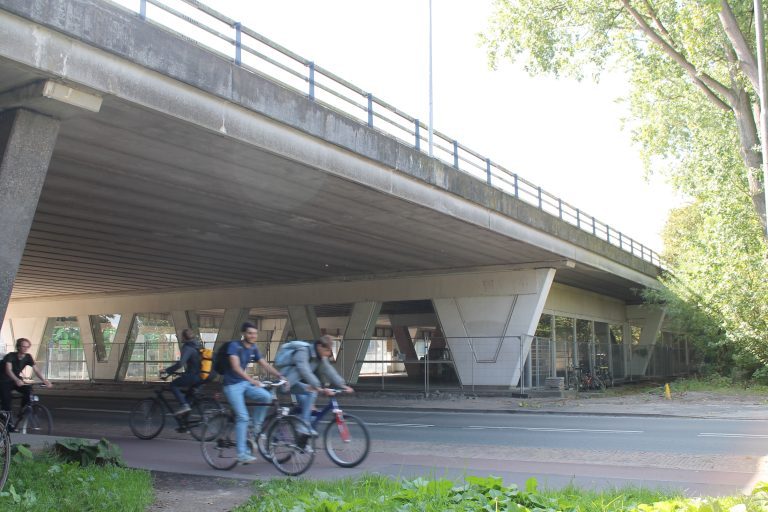 Students cycle by the newly vacated space under the bridge. (Photo: Oscar Greenwell)
Students cycle by the newly vacated space under the bridge. (Photo: Oscar Greenwell)A few years later, Tov’s student house was sold, and Tov was left without a roof over his head. When Kamiel suggested that Tov move in under the bridge, it was taken as a joke at first. But after a while, and seeing how hard it is to find a room in Delft, their wacky idea became increasingly attractive; at a certain point it seemed worth a shot. Tov explains: “Kamiel texted me a picture of the bridge and he said, ‘I’m broke as hell. And you’re going to be evicted. I think it’s time to put [our idea] into action’.” They spread the word and several other students and ex-students they knew via via ended up joining them in the endeavour.
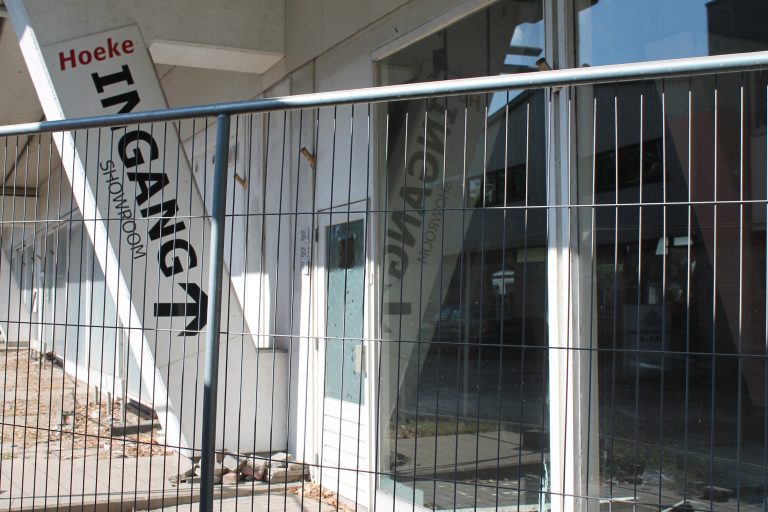 The space under the bridge was previously a car showroom. (Photo: Oscar Greenwell)
The space under the bridge was previously a car showroom. (Photo: Oscar Greenwell)Tov and his fellow OEBers lived in trailers under the bridge at Rotterdamseweg in the hope that this would lead to the development of an elaborate space not just for communal living, but also for public events. They felt that there was a dearth of spaces open to community activities in Delft. The seemingly endless possibilities were quashed, however, when they were evicted by the provincial government, backed by a court ruling that cited safety concerns as the justification.
No-show room
The Central Bureau of Statistics reports that there are around 200,000 vacant buildings in the Netherlands, with 40% of them having been vacant for over a year. Considering this long-term vacancy exists in a nation suffering from a shortage of proper housing. Commercial property like the 2,500 m2 building under the Rotterdamseweg bridge can easily be put to use.
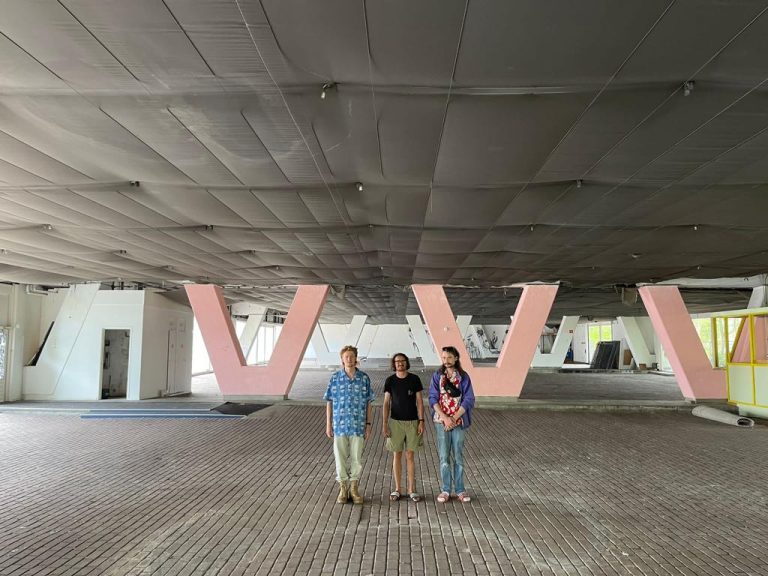 “The motorway above absorbs most of the sound of the cars, it’s surprisingly quiet inside,” explains Tov. (Photo: OEB)
“The motorway above absorbs most of the sound of the cars, it’s surprisingly quiet inside,” explains Tov. (Photo: OEB)
Originally, the building was divided into five sections, three of which had been rented out as a car-showroom; hence the bare interior and glass panelling. But after the dealership was damaged by a fire, though there was no significant damage, the rental contract was not extended, and the building was cleared out. The province of South Holland decided that the building should be demolished, but those plans fell through the bureaucratic cracks. For seven years the space remained vacant, and, according to nearby residents, became a hangout for local wayward youth and the homeless.
A few years ago a group tried to set up their own squat in the building, but they were evicted after maintenance checks by energy company Stedin showed that the group had caused a dangerous gas leak when it bypassed the building’s gas meter. After that group got evicted, electricity, water and gas lines were cut. The only thing left was a clogged conduit to the sewage system. “Since I’ve been studying here in Delft, I’ve never seen anything happening… it just was vacant and getting worse and worse,” says Tov.
Not just Space Invaders
OEB was not secretive about their ambitious plans for the forlorn space. From the moment they moved in, OEB informed the police, local government, provincial government, neighbours, and local businesses of what they envisaged. Tov elaborated: “We would invite them all over for a cup of coffee and chat, and tried to be super open with everyone. We kept the windows open, for example, [because] we [literally] wanted to be transparent.” The months before OEB’s move were spent planning and contacting squatter groups for advice. As part of the preparation, they also contacted one of the few lawyers in the Netherlands who gives legal representation to squatters. OEB wanted to do everything the right way and as legally as possible. It was a huge undertaking both bureaucratically and practically. OEB managed to reconnect the water lines, and unclog the sewage conduit, but reconnecting electricity was a problem. Luckily, Tov says, their neighbours were happy to oblige. “We made a deal with our neighbour, who allowed us to use electricity from his building; we just needed a long cable to connect to his outlet.”
 View of OEB from the street. (Photo: OEB)
View of OEB from the street. (Photo: OEB)
Though squatting was declared illegal in 2010, squatters do retain some rights. According to a 1971 Supreme Court ruling, if the squatters are in harmony with the surrounding neighbours and community, and they function much like a normal household, then it can be said that there is ‘domestic peace’. In such cases, it is not allowed to forcefully enter the squatted property without permission from the occupants. That is why property owners are often required to take squatters to court in order to get them evicted. What constitutes ‘domestic peace’ is, of course, subjective, giving law enforcement some leeway in deciding whom they can forcefully evict. OEB got off lightly; there are cases where it turns grim for squatters in some areas of the Netherlands because of aggression from law enforcement or property owners. In 2016, a report was published by the Dutch Government stating that between October 2010 and November 2014, 529 people had been arrested for the crime of squatting.
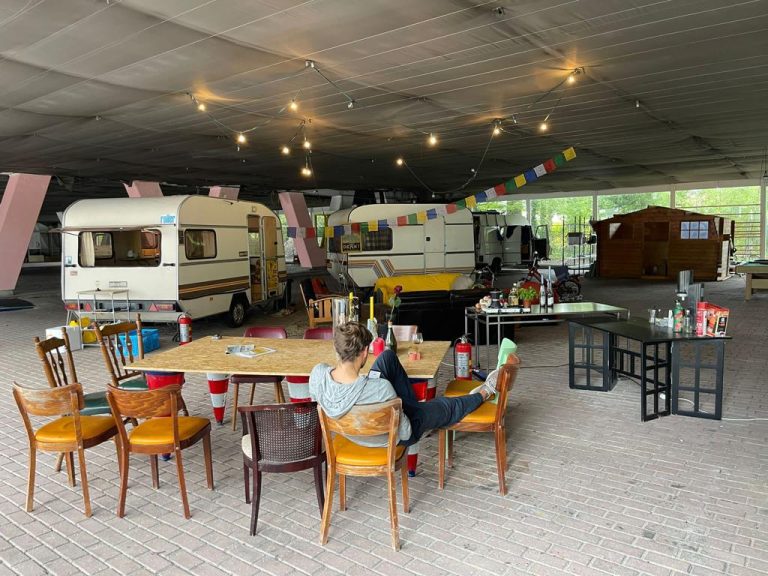 An OEBer reclines in the dining area set up in their encampment, perhaps this is what ‘domestic peace’ looks like. (Photo: OEB)
An OEBer reclines in the dining area set up in their encampment, perhaps this is what ‘domestic peace’ looks like. (Photo: OEB)
The main pushback against the OEB squat was from the provincial government. Tov elaborates. “At first, they seemed reasonably enthusiastic about the project, but by the third meeting they arrived dressed in suits and dress shirts.” They filed a lawsuit soon after. It was claimed that OEB should be evicted due to safety concerns, namely an alleged fire hazard in the three occupied sections of the building and asbestos in the other two, unoccupied sections. In counter argument, it should be pointed out that OEB had hung fire-alarms all around the space and never reconnected the gas line. The group had also already purchased impregnation fluid to spray over the adjoining asbestos contaminated walls, to prevent the hazardous particles becoming airborne.
Under a Bridge is over
Despite getting evicted, Tov remains upbeat about how OEB turned out. At the very least he walked away with some study credits (ECTS), as his plans for OEB as a communal living space was accepted as coursework by a few of his tutors here at TU Delft. Tov explains that the positive attention OEB garnered from the local community made it a success as far as he’s concerned. “One day an old lady came by on her electric bike and I thought, ‘uh-oh, I’m gonna get it’. But she said, ‘[It’s] super nice that you’re doing something with the space.’ These experiences already made the project for me.”
So once again, the space under the bridge is devoid of any socially redeeming dreams. Fencing has been placed all around the perimeter, and the provincial government has finally begun demolishing the space. Their plan is for it to remain an empty fenced-off section under the bridge. Tov has found a room in a more conventional student house and is well on his way towards graduation.
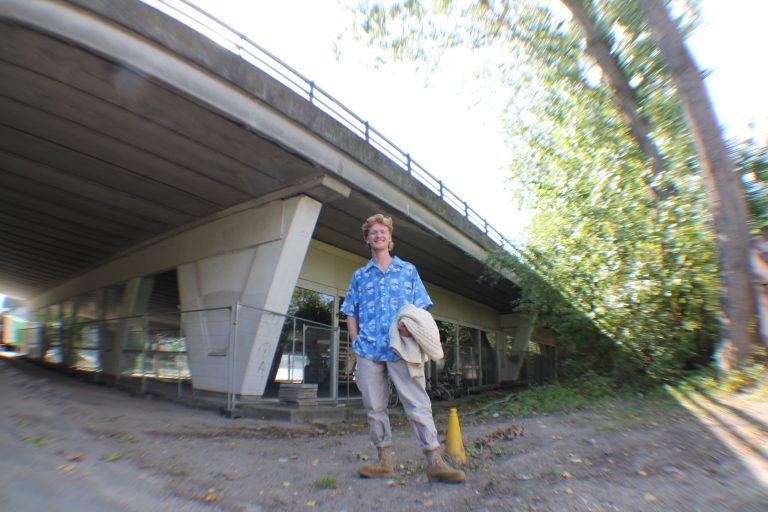 Tov poses outside the newly vacated space under the bridge. (Photo: Oscar Greenwell)
Tov poses outside the newly vacated space under the bridge. (Photo: Oscar Greenwell) - If you’re interested in reading more about OEB’s plans, Tov published an informative graphic novel that can be accessed here.
Oscar Greenwell / Editor


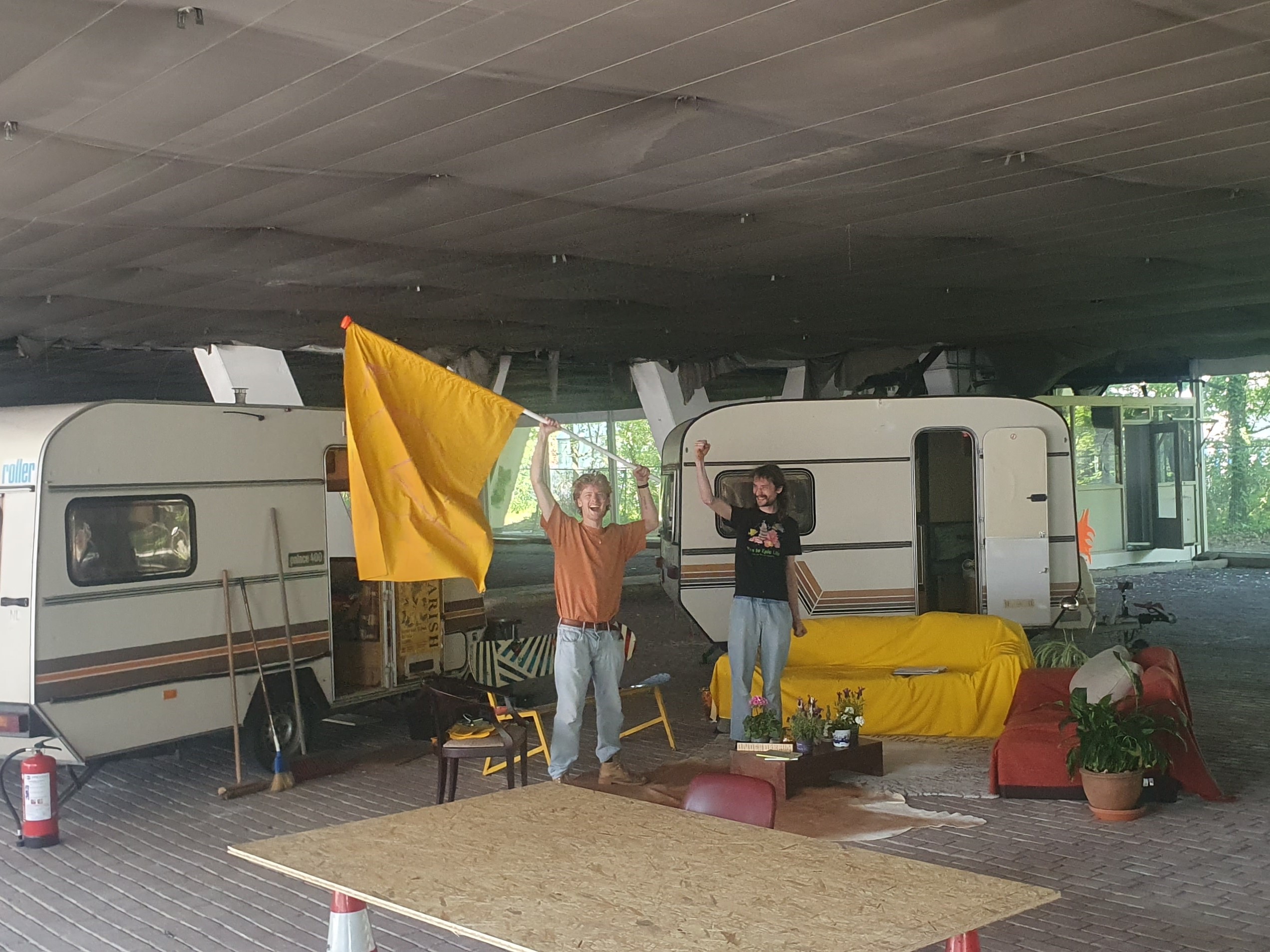
Comments are closed.